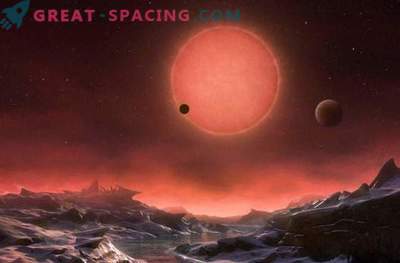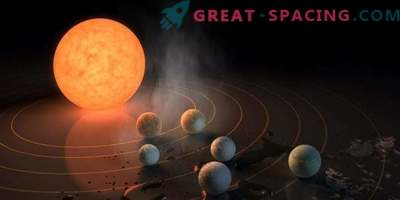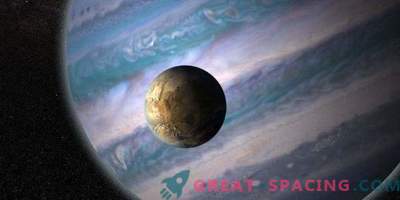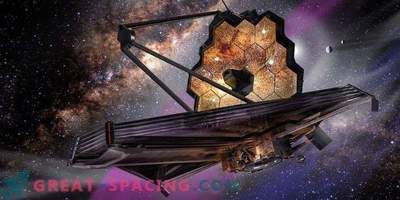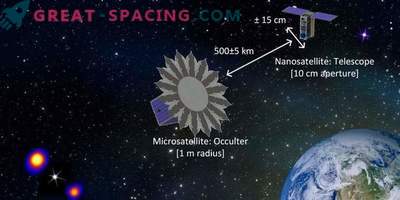
Artistic presentation of TRAPPIST-1 e
The atmosphere on the seven newly discovered planets orbiting the ultra-cold dwarf star TRAPPIST-1 seems mostly dense and deadly. However, the new study confirmed that one planet could be the ocean world with a habitable atmospheric layer.

Artistic interpretation of the TRAPPIST-1 system
The researchers presented radiation and chemical models with a detailed display of the atmospheres of the seven worlds of terrestrial size in the TRAPPIST-1 system. It is likely that TRAPPIST-1e is a planet capable of providing humanity with the necessary conditions for survival. It is only necessary to overcome the distance of 39 light years.
Lead author of the study and graduate student at Washington University Andrew Linkovsky says:
“The planet can be the water world whose surface is completely covered by the global ocean. Then the climate should resemble the earth's ”.
Linkovsky also believes that the planets of this system are able to tell more about how the worlds are aging and changing:
“This is a whole sequence of planets that can give us an idea of the evolution of planets near a star, which is very different from the Sun in size and brightness level”.
TRAPPIST-1 is a tiny red dwarf of class M, which was first discovered in 1999 as part of the 2MASS program. Only in 2015, we managed to notice exoplanets in the system, and the discovery of three was announced as early as May 2016.

All 7 planets of the TRAPPIST-1 system easily fit into the orbital path of Mercury
In 2017, the NASA Spitzer space telescope recorded that there can be as many as seven planets in the TRAPPIST-1 system, and three of them seem habitable.
Modeling the climate of a star other than the Sun helps scientists study other star systems and broaden understanding of the evolution of objects in the Universe. Models identify waveform signatures associated with atmospheric gases. Then, these data will use the telescope of James Webb, which will allow to study the composition of the planet and the environment.

Sun and TRAPPIST-1. The second star reaches only 11% of the solar diameter and is redder in color. Her planets are located closer to Mercury, so they receive as much radiation as Earth, Venus and Mars.
Understanding the process of forming different stars increases the ability of researchers to determine which processes can create a habitable environment on foreign planets.
We can pre-designate a habitable planet, but we do not yet have the technology to go to the site and check everything. Even with the launch of the New Horizons high-speed spacecraft (its speed is 14.31 km / s), it would have taken 817,000 years for it to get from Earth to the TRAPPIST-1 system.





